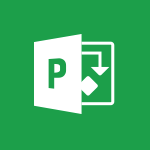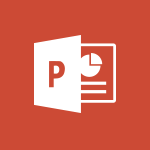Power BI - Manipulating tiles in a Dashboard Video
In this video, you will learn how to manipulate tiles in a dashboard using Microsoft 365. The video covers the steps to personalize your dashboard by adding, rearranging, and removing tiles.
You will also learn how to customize the appearance of the tiles and create subsets of contacts with tags.
This tutorial will help you optimize your dashboard and improve your productivity with Microsoft 365.
- 3:26
- 3320 views
-
Power BI - Sharing and publishing your Dashboard
- 3:43
- Viewed 2927 times
-
Power BI - Creating and configuring a Dashboard
- 2:50
- Viewed 3506 times
-
Power BI - Consulting and using a Dashboard
- 3:08
- Viewed 3325 times
-
Power BI - Publishing your Report through the Power BI Service
- 2:59
- Viewed 3512 times
-
Power BI - Customising your Report
- 3:12
- Viewed 2907 times
-
Power BI - Introduction to Power BI Mobile
- 2:15
- Viewed 3525 times
-
Power BI - Customising your Visuals
- 2:58
- Viewed 3371 times
-
Power BI - Introduction to the Query Editor
- 2:33
- Viewed 3441 times
-
Creating a Report
- 2:54
- Viewed 9136 times
-
Introduction to Power Bi
- 1:29
- Viewed 6380 times
-
General Introduction
- 2:54
- Viewed 4825 times
-
Create dynamic visual title using the Selected Value function
- 5:42
- Viewed 4078 times
-
Recovering your Data from different sources
- 3:26
- Viewed 3936 times
-
Introduction to Power BI Building Blocks
- 3:07
- Viewed 3843 times
-
Introduction to Power BI Desktop
- 2:52
- Viewed 3813 times
-
Create slicers
- 3:55
- Viewed 3731 times
-
Create quick measures
- 3:02
- Viewed 3727 times
-
Preparing, cleaning and transforming your Data
- 4:42
- Viewed 3601 times
-
Introduction to Power BI Mobile
- 2:15
- Viewed 3525 times
-
Publishing your Report through the Power BI Service
- 2:59
- Viewed 3512 times
-
Creating and configuring a Dashboard
- 2:50
- Viewed 3506 times
-
Creating your Datasets
- 2:26
- Viewed 3492 times
-
Introduction to the Query Editor
- 2:33
- Viewed 3441 times
-
Customising your Visuals
- 2:58
- Viewed 3371 times
-
Conditional formatting
- 3:35
- Viewed 3342 times
-
Consulting and using a Dashboard
- 3:08
- Viewed 3325 times
-
Use the drill down filter
- 4:41
- Viewed 3298 times
-
Calculate function
- 4:22
- Viewed 3222 times
-
Turn on the drill down feature
- 2:23
- Viewed 3008 times
-
Add an alert to a visual
- 2:24
- Viewed 2943 times
-
Sharing and publishing your Dashboard
- 3:43
- Viewed 2927 times
-
Customising your Report
- 3:12
- Viewed 2907 times
-
Manage interactions
- 1:56
- Viewed 2902 times
-
Manage relations between data sources
- 2:37
- Viewed 2836 times
-
What are measures?
- 2:58
- Viewed 2701 times
-
Introduction to PowerBI
- 00:60
- Viewed 168 times
-
Creating a Report
- 2:54
- Viewed 9136 times
-
Create a PivotTable report manually
- 4:59
- Viewed 4130 times
-
Recovering your Data from different sources
- 3:26
- Viewed 3936 times
-
Create a PivotTable and analyze your data
- 1:35
- Viewed 3819 times
-
Sort, filter, summarize and calculate your PivoteTable data
- 3:49
- Viewed 3814 times
-
How to track and monitor values with the Watch Window
- 2:42
- Viewed 3812 times
-
Preparing, cleaning and transforming your Data
- 4:42
- Viewed 3601 times
-
Publishing your Report through the Power BI Service
- 2:59
- Viewed 3512 times
-
Analyze your network and communication habits
- 2:17
- Viewed 3509 times
-
Creating and configuring a Dashboard
- 2:50
- Viewed 3506 times
-
Creating your Datasets
- 2:26
- Viewed 3492 times
-
Introduction to the Query Editor
- 2:33
- Viewed 3441 times
-
Customising your Visuals
- 2:58
- Viewed 3371 times
-
Consulting and using a Dashboard
- 3:08
- Viewed 3325 times
-
Improved version history
- 0:51
- Viewed 3023 times
-
Sharing and publishing your Dashboard
- 3:43
- Viewed 2927 times
-
Customising your Report
- 3:12
- Viewed 2907 times
-
XLOOKUP (Advanced metrics)
- 9:30
- Viewed 2613 times
-
Use slicers, timelines and PivotCharts to analyze your pivotetable data
- 3:38
- Viewed 2568 times
-
Check and share your form results
- 2:42
- Viewed 2356 times
-
XLOOKUP (Basic metrics)
- 4:19
- Viewed 2294 times
-
Optimize Meetings with Viva Insights
- 1:58
- Viewed 2138 times
-
Manage video settings
- 1:27
- Viewed 2049 times
-
Receiving a briefing email from Viva Insights
- 0:54
- Viewed 1473 times
-
Analyze Team Dynamics
- 1:19
- Viewed 847 times
-
Organize Your Messages with Rules
- 02:01
- Viewed 531 times
-
Process an incoming message
- 01:53
- Viewed 280 times
-
Sort and filter emails
- 02:51
- Viewed 273 times
-
Organize into Folders
- 01:57
- Viewed 265 times
-
Manage Views
- 02:36
- Viewed 254 times
-
Use Categories
- 02:51
- Viewed 218 times
-
Clean Up Your Inbox
- 01:18
- Viewed 218 times
-
Easily Sort Your Mails
- 01:38
- Viewed 187 times
-
Introduction to PowerBI
- 00:60
- Viewed 168 times
-
Introduction to PowerBI
- 00:60
- Viewed 168 times
-
Introduction to Microsoft Outlook
- 01:09
- Viewed 159 times
-
Introduction to Microsoft Insights
- 02:04
- Viewed 158 times
-
Introduction to Microsoft Viva
- 01:22
- Viewed 163 times
-
Introduction to Planner
- 00:56
- Viewed 172 times
-
Introduction to Microsoft Visio
- 02:07
- Viewed 159 times
-
Introduction to Microsoft Forms
- 00:52
- Viewed 166 times
-
Introducing to Microsoft Designer
- 00:28
- Viewed 225 times
-
Introduction to Sway
- 01:53
- Viewed 143 times
-
Introducing to Word
- 01:00
- Viewed 166 times
-
Introducing to SharePoint Premium
- 00:47
- Viewed 148 times
-
Create a call group
- 01:15
- Viewed 200 times
-
Use call delegation
- 01:07
- Viewed 129 times
-
Assign a delegate for your calls
- 01:08
- Viewed 200 times
-
Ring multiple devices simultaneously
- 01:36
- Viewed 138 times
-
Use the "Do Not Disturb" function for calls
- 01:28
- Viewed 127 times
-
Manage advanced call notifications
- 01:29
- Viewed 143 times
-
Configure audio settings for better sound quality
- 02:08
- Viewed 173 times
-
Block unwanted calls
- 01:24
- Viewed 140 times
-
Disable all call forwarding
- 01:09
- Viewed 142 times
-
Manage a call group in Teams
- 02:01
- Viewed 133 times
-
Update voicemail forwarding settings
- 01:21
- Viewed 131 times
-
Configure call forwarding to internal numbers
- 01:02
- Viewed 124 times
-
Set call forwarding to external numbers
- 01:03
- Viewed 149 times
-
Manage voicemail messages
- 01:55
- Viewed 188 times
-
Access voicemail via mobile and PC
- 02:03
- Viewed 205 times
-
Customize your voicemail greeting
- 02:17
- Viewed 125 times
-
Transfer calls with or without an announcement
- 01:38
- Viewed 121 times
-
Manage simultaneous calls
- 01:52
- Viewed 132 times
-
Support third-party apps during calls
- 01:53
- Viewed 161 times
-
Add participants quickly and securely
- 01:37
- Viewed 132 times
-
Configure call privacy and security settings
- 02:51
- Viewed 130 times
-
Manage calls on hold
- 01:20
- Viewed 139 times
-
Live transcription and generate summaries via AI
- 03:43
- Viewed 128 times
-
Use the interface to make and receive calls
- 01:21
- Viewed 132 times
-
Action Function
- 04:18
- Viewed 139 times
-
Search Function
- 03:42
- Viewed 189 times
-
Date and Time Function
- 02:53
- Viewed 171 times
-
Logical Function
- 03:14
- Viewed 257 times
-
Text Function
- 03:25
- Viewed 201 times
-
Basic Function
- 02:35
- Viewed 160 times
-
Categories of Functions in Power FX
- 01:51
- Viewed 189 times
-
Introduction to Power Fx
- 01:09
- Viewed 161 times
-
The New Calendar
- 03:14
- Viewed 283 times
-
Sections
- 02:34
- Viewed 172 times
-
Customizing Views
- 03:25
- Viewed 166 times
-
Introduction to the New Features of Microsoft Teams
- 00:47
- Viewed 273 times
-
Guide to Using the Microsoft Authenticator App
- 01:47
- Viewed 187 times
-
Turn on Multi-Factor Authentication in the Admin Section
- 02:07
- Viewed 147 times
-
Concept of Multi-Factor Authentication
- 01:51
- Viewed 174 times
-
Retrieve Data from a Web Page and Include it in Excel
- 04:35
- Viewed 393 times
-
Create a Desktop Flow with Power Automate from a Template
- 03:12
- Viewed 335 times
-
Understand the Specifics and Requirements of Desktop Flows
- 02:44
- Viewed 207 times
-
Dropbox: Create a SAS Exchange Between SharePoint and Another Storage Service
- 03:34
- Viewed 350 times
-
Excel: List Files from a Channel in an Excel Workbook with Power Automate
- 04:51
- Viewed 223 times
-
Excel: Link Excel Scripts and Power Automate Flows
- 03:22
- Viewed 229 times
-
SharePoint: Link Microsoft Forms and Lists in a Power Automate Flow
- 04:43
- Viewed 405 times
-
SharePoint: Automate File Movement to an Archive Library
- 05:20
- Viewed 199 times
-
Share Power Automate Flows
- 02:20
- Viewed 194 times
-
Manipulate Dynamic Content with Power FX
- 03:59
- Viewed 198 times
-
Leverage Variables with Power FX in Power Automate
- 03:28
- Viewed 185 times
-
Understand the Concept of Variables and Loops in Power Automate
- 03:55
- Viewed 198 times
-
Add Conditional “Switch” Actions in Power Automate
- 03:58
- Viewed 232 times
-
Add Conditional “IF” Actions in Power Automate
- 03:06
- Viewed 168 times
-
Create an Approval Flow with Power Automate
- 03:10
- Viewed 361 times
-
Create a Scheduled Flow with Power Automate
- 01:29
- Viewed 584 times
-
Create an Instant Flow with Power Automate
- 02:18
- Viewed 338 times
-
Create an Automated Flow with Power Automate
- 03:28
- Viewed 328 times
-
Create a Simple Flow with AI Copilot
- 04:31
- Viewed 306 times
-
Create a Flow Based on a Template with Power Automate
- 03:20
- Viewed 274 times
-
Discover the “Build Space”
- 02:26
- Viewed 193 times
-
The Power Automate Mobile App
- 01:39
- Viewed 201 times
-
Familiarize Yourself with the Different Types of Flows
- 01:37
- Viewed 195 times
-
Understand the Steps to Create a Power Automate Flow
- 01:51
- Viewed 283 times
-
Discover the Power Automate Home Interface
- 02:51
- Viewed 188 times
-
Access Power Automate for the Web
- 01:25
- Viewed 298 times
-
Understand the Benefits of Power Automate
- 01:30
- Viewed 247 times
Objectifs :
This document aims to provide a comprehensive guide on how to customize and manage tiles in a dashboard, including resizing, moving, editing details, and utilizing various features for enhanced data visualization.
Chapitres :
-
Introduction to Dashboard Customization
Dashboards are essential tools for visualizing data effectively. This guide will walk you through the steps to customize your dashboard tiles, allowing for a more tailored and efficient data presentation. -
Resizing and Moving Tiles
To resize a tile, simply drag its handles inwards or outwards. Moving a tile is equally straightforward; click on the tile and drag it to your desired location on the dashboard. -
Editing Tile Details
You can edit the details of a tile by accessing the Details pane. To do this, hover your mouse over the tile, click on the ellipsis in the upper right corner, and select 'Edit Details.' Here, you can modify the tile title, subtitle, date, time, and even create a custom link. -
Accessing Underlying Data
By default, clicking on a tile will take you to the originating report, allowing you to view the underlying data. However, you can change this behavior by creating a custom link in the Details Pane of the tile's organization homepage. -
Editing Tile Aspects and Data
To edit the tile's aspect or data, click on the ellipsis and select 'Go To Report' or simply click on the tile. Once in the report, click on 'Edit Report' in the top menu to enter creation mode. After making your edits, remember to click 'Save' to apply the changes. -
Additional Features Available
Several features can be accessed by clicking on the ellipsis, including: - **Open in Focus Mode**: This allows you to concentrate on a specific graphic or visual, utilizing the entire dashboard space. - **Export to Excel**: Export the data displayed by the visual to a CSV file. - **View Insights**: Display a summary of the data represented on the tile, organized by minimum or maximum range or total. - **Pin Tile**: Pin the tile onto another dashboard for easy access. - **Delete Tile**: Remove the tile from the dashboard. -
Setting Alerts on Tiles
You can define alerts on card tiles by clicking on the ellipsis and selecting 'Manage Alerts.' In the pane that opens, click on 'Add Alert Rule,' define the condition and threshold, and choose whether to receive an alert email. Confirm your choices by clicking 'Save and Close.' You can set multiple alerts for the same tile. -
Conclusion
Customizing your dashboard tiles enhances data visualization and accessibility. By following the steps outlined in this guide, you can effectively manage your dashboard to better meet your data presentation needs.
FAQ :
How do I resize a tile on my dashboard?
To resize a tile, simply drag its handles inwards or outwards until it reaches the desired size.
Can I edit the details of a tile?
Yes, you can edit the details of a tile by hovering over it, clicking on the ellipsis in the upper right corner, and selecting 'Edit Details' from the menu.
What happens when I click on a tile?
By default, clicking on a tile will take you to the originating report, allowing you to view the underlying data of the visual.
How can I create a custom link for a tile?
You can create a custom link in the Details Pane of the tile by editing the tile's properties and specifying the link you want to use.
What is Focus Mode and how do I use it?
Focus Mode allows you to concentrate on a specific visual by expanding it to fill the entire dashboard space. You can activate it by clicking on the ellipsis and selecting 'Open in Focus Mode.'
How do I set up alerts for a tile?
To set up alerts, click on the ellipsis, select 'Manage Alerts,' and then click 'Add Alert Rule' to define the conditions and thresholds for the alert.
Quelques cas d'usages :
Customizing Dashboard Layouts
In a marketing department, team members can customize their dashboard layouts by resizing and moving tiles to prioritize key metrics, such as campaign performance and lead generation, enhancing their ability to make data-driven decisions.
Creating Custom Links for Reports
A project manager can create custom links in the Details Pane of tiles to direct team members to specific project reports, streamlining access to relevant data and improving collaboration.
Using Focus Mode for Presentations
During a client presentation, a sales representative can use Focus Mode to highlight specific visuals, ensuring that the audience's attention is directed to the most important data points.
Exporting Data for Analysis
A data analyst can export visual data to Excel for further analysis, allowing for advanced calculations and data manipulation that may not be possible within the dashboard interface.
Setting Alerts for Key Metrics
A finance team can set alerts on card tiles to monitor critical financial thresholds, ensuring they are notified immediately if any key performance indicators fall below acceptable levels.
Glossaire :
Dashboard
A dashboard is a visual interface that displays key performance indicators (KPIs) and other important data points in a consolidated view, allowing users to monitor and analyze information at a glance.
Tile
A tile is a visual element on a dashboard that represents a specific data point or metric. Users can interact with tiles to view more detailed information or perform actions.
Details Pane
The Details Pane is a section of the dashboard interface where users can view and edit the properties of a selected tile, including its title, subtitle, and custom links.
Ellipsis
An ellipsis is a three-dot icon (•••) used in user interfaces to indicate that more options or actions are available for a selected item.
Focus Mode
Focus Mode is a feature that allows users to concentrate on a specific visual or graphic by expanding it to fill the entire dashboard space, minimizing distractions from other elements.
Export to Excel
Export to Excel is a function that enables users to download data displayed in a visual as a CSV file, which can be opened and manipulated in spreadsheet software like Microsoft Excel.
Pin Tile
Pin Tile is a command that allows users to attach a tile from one dashboard to another, making it easier to access important visuals across different dashboards.
Manage Alerts
Manage Alerts is a feature that enables users to set up notifications for specific conditions related to tile data, allowing them to receive alerts when certain thresholds are met.




